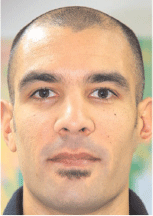Could a structurally controlled, hydrothermal dolomite play be operative in Cambro-Ordovician carbonates of the southern Georgina Basin, Queensland?
Robbert J. Willink A , Mike J. Bucknill A and Nathan C. Palmer ACentral Petroleum Ltd.
The APPEA Journal 56(2) 535-535 https://doi.org/10.1071/AJ15041
Published: 2016
Abstract
Hydrothermal dolomitisation of carbonates can create zones of favourable porosity and permeability in otherwise tight carbonate successions. In North America, a number of fields produce oil and gas from such reservoirs that developed along and adjacent to pre-existing fault zones acting as loci for hydrothermal fluid flow. Seismic data across these North American fields are characterised by linear zones of disturbance evident along fault zones where porosity development has occurred.
Similar zones of disturbance have been observed on newly acquired seismic over the Toko Syncline in Queensland. Here, these zones extend through a thick Cambro-Ordovician carbonate succession that includes platform carbonates of the Thorntonia Limestone, overlying deeper water deposits of the Arthur Creek Formation that are organic rich and hydrocarbon generative at their base, and also in younger shallow water carbonates of the Arrinthrunga, Ninmaroo, Kelly Creek and Coolibah formations. If these zones of disturbance on seismic also reflect the development of hydrothermal dolomite reservoirs, they provide a new exploration target in the southern Georgina Basin.

Robbert (Rob) Willink holds a BSc (Hons) degree from the University of Tasmania and a PhD in geology from the Australian National University. He has more than 35 years of experience in the industry as a petroleum geologist and has worked for Shell in Australia, the Sultanate of Oman and in Turkey, and for the University of Adelaide, Sagasco and Origin Energy in Australia, before assuming his present role as an Exploration Advisor for Central Petroleum Ltd. He is also an Adjunct Professor in the School of Earth Sciences at The University of Queensland, and runs an industry training course under his own company, Investigative Exploration Pty Ltd. He is based in Brisbane, Queensland. |

Michael (Mike) Bucknill holds a Bachelor of Science (Hons) Geology and Geophysics degree from Melbourne University. He has 30 years of exploration and development experience, in domestic and international projects with Exxon (Esso, Delhi), MIMPEX, Japan Energy, JNOC, Paradigm Geophysical, and Acer Energy. He joined Central Petroleum as General Manager, Exploration in 2013 before returning to consulting at Geovision in 2016. |

Nathan Palmer attended Curtin University of Technology where he completed a BSc (Hons) in geophysics in 1999. He started his career as a geophysicist involved in offshore seismic acquisition in various locations and seismic data processing in Australia and the UK with WesternGeco. He is presently involved in onshore exploration as a geophysicist with Central Petroleum Ltd, based in Brisbane. Member: ASEG, SEG and PESA. |
References
Ambrose, G.J, Kruse, P.D., and Putnam, P.E. (2001). Geology and hydrocarbon potential of the southern Georgina Basin. The APPEA Journal 41, 139–63.Ambrose, G.J. and Putnam, P.E., 2007—Carbonate ramp facies and oil plays in the Middle/Late Cambrian, southern Georgina Basin, Australia. Proceedings of the Central Australian Basins Symposium, Alice Springs, NT, 16–18 August. Northern Territory Geological Survey, Special Publication 2.
Davies, G.R., 1996—Hydrothermal dolomite (HTD) reservoir facies. Graham Davies Geological Consultants, Canadian Society of Petroleum Geologists short course notes, Edition 1.
Davies, G.R., and Smith, L.B. (2006). Structurally controlled hydrothermal dolomite reservoir facies: an overview. AAPG Bulletin 90, 1,641–90.
Draper, J. (2007). Georgina Basin: an early Palaeozoic carbonate petroleum system in Queensland. The APPEA Journal 47, 107–26.
Dunster, J.N., Kruse, P.D., Duffett, M.L. and Ambrose, G.J., 2007—Geology and resource potential of the southern Georgina Basin. Digital information package DIP007. Darwin: Northern Territory Geological Survey.
Grammer, G.M., Thornton, J.E., Robinson, M.R., Feutz, P.J., Schultz, J.E. and Harrison, W.B., 2014—Stratigraphic control on the lateral distribution of hydrothermal dolomites away from major fault zones: part 2. AAPG Search and Discovery Article #50964.
Hurley, N.F. and Budros, R., 1990—Albion-Scipio and Stoney Point fields – U.S.A. Michigan Basin. In: Beaumont, E.A. and Foster, N.H. (eds) Stratigraphic Traps I. AAPG Treatise of Petroleum Geology, Atlas of Oil and Gas Fields, 1–37.
Ogiesoba, O.C., and Hart, B.S. (2009). Fault imaging in hydrothermal dolomite reservoirs: a case study. Geophysics 74, B71–82.
Radke, B.M., and Duff, P. (1980). A potential dolostone reservoir in the Georgina Basin: the Lower Ordovician Kelly Creek Formation. BMR Journal of Australian Geology and Geophysics 5, 160–63.
Radke, B.M., and Mathis, R.L. (1980). On the formation and occurrence of saddle dolomite. Journal of Sedimentary Petrology 50, 1,149–68.
Saller, A., 2013—Controls on hydrothermal dolomites and their reservoir properties. AAPG Search and Discovery Article #50838.
Smith, L.B. (2006). Origin and reservoir characteristics of Upper Ordovician Trenton-Black River hydrothermal dolomite reservoirs in New York. AAPG Bulletin 90, 1,691–718.


